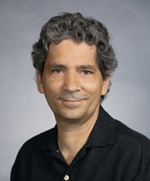
Armin Blesch, Ph.D.
Professor in Residence

- Current Research
Current Research
Regeneration and Plasticity in the Injured Spinal Cord
The overall goal of our research is to identify mechanisms that influence neuronal plasticity and regeneration in the injured mammalian nervous system to identify new targets and techniques for therapeutic intervention. Current studies investigate the potential role of neural stem cells, biomaterials and neuronal activity as a means for spinal cord regeneration, and the structural changes underlying the development of pain after spinal cord injury. The latter together with evaluation of bladder dysfunction and autonomic responses after injury represent clinically relevant outcome measures complementing a strong focus on cellular and molecular mechanisms. Ongoing studies include:
Neural stem cell transplantation: Advancements in the generation and differentiation of neural stem cells from adult sources by cellular reprogramming has opened fascinating new opportunities to investigate questions that were impossible to address just a few years ago. In particular, we are interested in means to manipulate the differentiation of neural stem cells into phenotypes appropriate for neuronal relays in the spinal cord and means to augment the integration of transplanted cells in the spinal cord circuitry. To address these questions, we take advantage of new methods to manipulate the activity of grafted cells and to introduce specific mutations into stem cells. The main hypothesis underlying these experiments is that new transplanted neurons will only be able to have a functional influence if they are appropriately integrated into the injured circuitry.
Biomaterials: Regeneration of axons for long distances and across a lesion site remains a major challenge especially in lesions of the human spinal cord. Achieving linear axonal growth across a lesion in the spinal cord is likely necessary for axons to reach the distal host spinal cord. In collaboration with Dr. Müller (Univ. of Regensburg, Germany) and Dr. Weidner, Heidelberg University Hospital, we are using anisotropic alginate capillary gels to physically guide axons across the lesion site. Modification of channel diameters, cellular seeding into the channels and surface modification with peptides are variables that we continue to investigate.
Pain in spinal cord injury: In mouse models of spinal cord injury, we aim to address mechanisms of neuropathic pain and activity-dependent approaches to modulate spinal cord and cortical plasticity underlying pain. Mouse models will allow us to silence or ablate specific subpopulations of sensory neurons to determine their influence on pain responses. We are also examining changes in the innate immune response and how these might influence the development of chronic SCI-related pain.
Electrical stimulation: There is considerable evidence that electrical stimulation can enhance axonal regeneration in the PNS. In the CNS, some studies suggest that sprouting of spared fibers can be enhanced by electrical stimulation. We aim to determine whether electrical stimulation can also enhance regeneration in the CNS and to define the mechanisms underlying these responses. Studies conducted in collaboration with Karim Fouad, Univ. of Alberta focus on corticospinal and dorsal column sensory axons.
